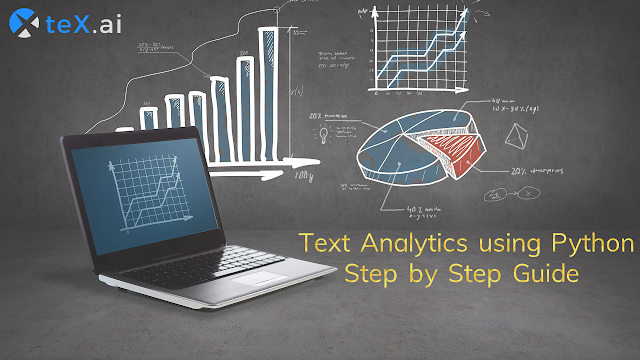What is Text Analytics?
Text mining, or text analytics solution, is the way toward transforming normal everyday content
into important and significant data, for example transforming words into measurements and
numbers.
into important and significant data, for example transforming words into measurements and
numbers.
Through applying methods from man-made consciousness, data recovery, data scraping, AI,
measurements, and computational semantics, data scraping tool gives important data valuable
to everything from biomedicine to internet based life checking to the financial exchange.
measurements, and computational semantics, data scraping tool gives important data valuable
to everything from biomedicine to internet based life checking to the financial exchange.
Text Analytics solutions can be come down into 3 essential advances:
- Data Collection
- Data Preprocessing and
- Data Analysis
Data Collection:
The initial step is to assemble a data set consisting of tweets, client remarks, messages, overview
reactions, or some other raw text data. You can physically reorder information from sites or
records to assemble littler data sets. For bigger data sets you will most likely need some
assistance from an information supplier.
reactions, or some other raw text data. You can physically reorder information from sites or
records to assemble littler data sets. For bigger data sets you will most likely need some
assistance from an information supplier.
Data Preprocessing:
The subsequent stage is preprocessing, where the text data is parsed by mining catchphrases
and evacuating promotions (if material) or other unimportant data. Watchwords are resolved
through various components, including recurrence inside a report; recurrence over all records;
and grammatical form labeling, NLP analytics solutions.
and evacuating promotions (if material) or other unimportant data. Watchwords are resolved
through various components, including recurrence inside a report; recurrence over all records;
and grammatical form labeling, NLP analytics solutions.
Data Analysis:
In the last advance, significant and valuable data is separated from the easier content portrayal
as text analytics software with great text mining procedures.
as text analytics software with great text mining procedures.
Tokenization:
Tokenization in text analytics software is the way toward hacking up a given stream of content
or character succession into words, expressions, images, or other important components
assembled tokens which are gathered as a semantic unit and utilized as contribution for
additional handling, for example, parsing or data scraping tools.
or character succession into words, expressions, images, or other important components
assembled tokens which are gathered as a semantic unit and utilized as contribution for
additional handling, for example, parsing or data scraping tools.
Tokenization is a valuable procedure in the fields of text analytics Python and information
security.
security.
It is utilized as a type of text summarization solution and as a remarkable image portrayal for the
delicate information in the information security without trading off its security significance.
delicate information in the information security without trading off its security significance.
Stop Word Removal:
Now and then an exceptionally regular word, which would have all the earmarks of being of
little importance in assisting with choosing reports coordinating client's need, is totally rejected
from the jargon. These words are designated "stop words" and the system is classified "stop
word evacuation".
little importance in assisting with choosing reports coordinating client's need, is totally rejected
from the jargon. These words are designated "stop words" and the system is classified "stop
word evacuation".
Lemmatization:
Lemmatisation (or lemmatization) in etymology, is the way toward diminishing the bent
structures or some of the time the determined types of a word to its base structure with the goal
that they can be examined as a solitary term.
structures or some of the time the determined types of a word to its base structure with the goal
that they can be examined as a solitary term.
Lemmatization and stemming are firmly identified with one another as the objective of the two
procedures is to diminish the inflectional structures or derivationally related types of a word to
its base structure.
procedures is to diminish the inflectional structures or derivationally related types of a word to
its base structure.
Equivalent word Expansion:
Equivalent word extension, otherwise called lexical substitution, is the errand of supplanting a
specific word in a given ai based text analytics tool with another reasonable word comparative
in importance.
specific word in a given ai based text analytics tool with another reasonable word comparative
in importance.
Report Representation:
Report portrayal is a key procedure in the record preparing and data recovery frameworks. A
such changed record depicts the substance of the first reports dependent on the constituent
terms called file terms.
such changed record depicts the substance of the first reports dependent on the constituent
terms called file terms.
Conclusion
Hope you enjoyed the techniques as we discussed above in text analytics software. Hereby I
welcome you all to share your thoughts and feedback in the comment section.
welcome you all to share your thoughts and feedback in the comment section.
Thanks and Regards,
Charles,

No comments:
Post a Comment